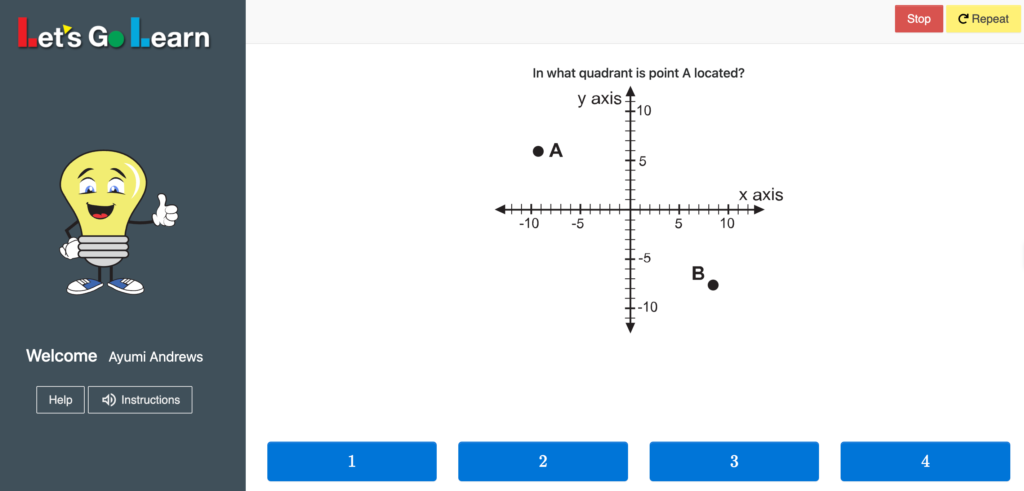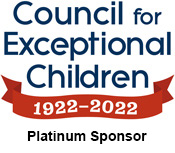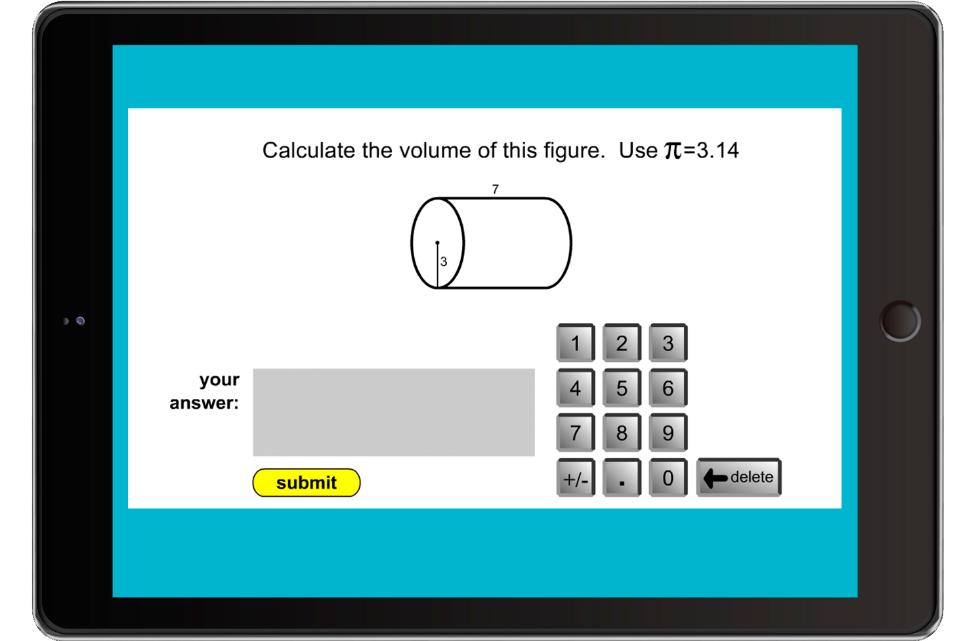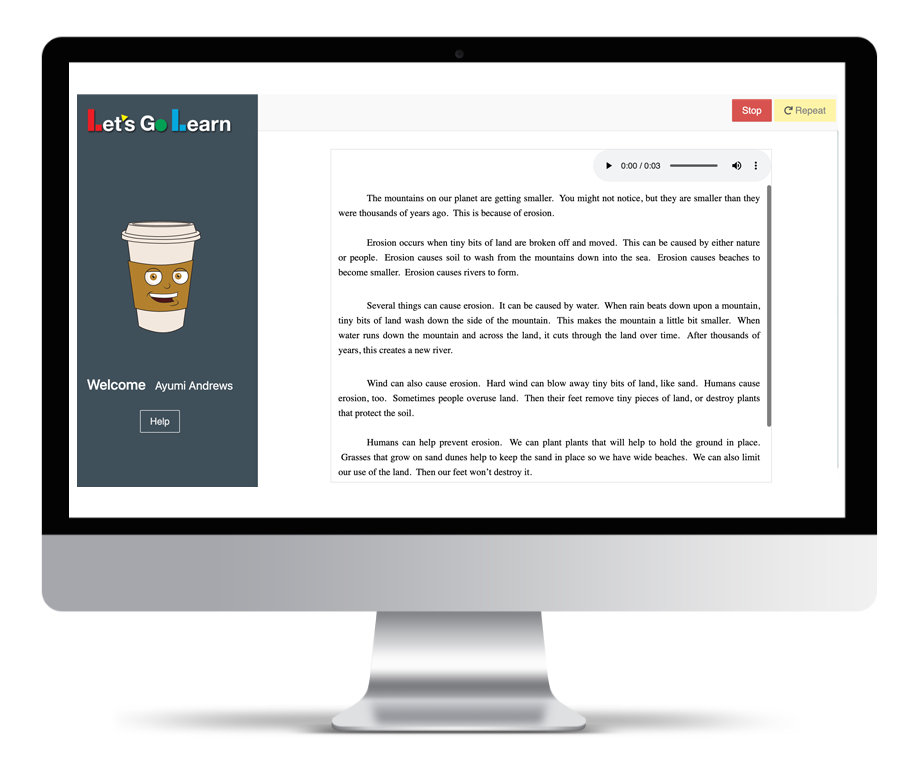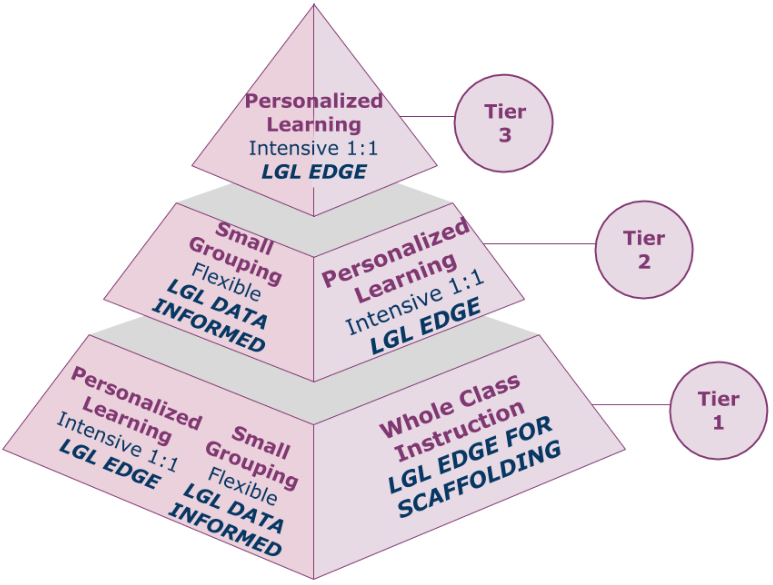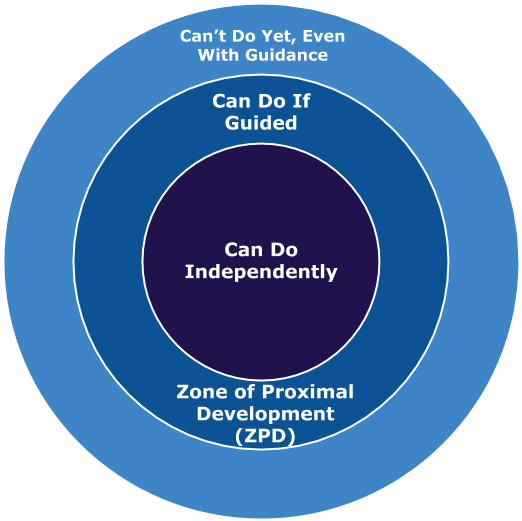Glossary

ADAM – Adaptive Diagnostic Assessment of Mathematics
ADAM is a K-7/8 comprehensive diagnostic assessment of mathematics available from Let’s Go Learn in English and Spanish.
To learn more about ADAM, click here.
Adaptive Learning
Adaptive learning is a teaching process which personalizes education by adjusting the content, pace, and scaffolding provided during instruction. Software, including Let’s Go Learn’s assessment and instruction products, optimizes adaptive learning by using AI strategies in real-time and allowing the teacher to personalize education for an entire classroom simultaneously.
To learn more about Adaptive Learning, click here.
Assistive Technology Device
An assistive technology device (ATD) is any item that helps people who have physical disabilities to perform everyday tasks. ATDs can be used in many different ways including helping people communicate, navigate, play games, type on a keyboard, use a mouse, control devices like lights and appliances, and even help them get dressed.
To learn more about ATDs, click here.
Asynchronous Learning
In asynchronous learning, students learn at their own pace, not necessarily when instruction is occurring. Typically asynchronous learning involves watching recorded audio/video or other pre-made instructional content. The opposite of synchronous learning.
To learn more about Asynchronous Learning, click here.
BIP – Behavior Intervention Plan
A behavior intervention plan (or BIP) is a formal, written plan that teaches and rewards good behavior. The purpose is to prevent or stop misbehavior.
To learn more about BIP, click here.
Blended Learning
Blended learning is an instructional delivery model that combines online instruction with face-to-face instruction in order to provide students with a variety of learning opportunities, to supplement in-person education, or to limit in-person instruction.
To learn more about Blended Learning, click here.
BYOD – Bring Your Own Device
BYOD refers to the use of personal devices (e.g., smartphones, tablets) for educational purposes in schools or at home.
To learn more about BYOD, click here.
CASE – Council of Administrators of Special Education
The CASE is an international, professional organization, affiliated with the Council for Exceptional Children (CEC), which supports the efforts and standards of special education administrators.
To learn more about CASE, click here.
CEC – Council of Exceptional Children
The CEC is the largest international professional organization dedicated to improving the success of children and youth with disabilities and/or gifts and talents.
To learn more about the CEC, click here.
CMS – Course Management System
A CMS is an online platform that provides students with access to course content, assignments, grades, attendance records, and other information related to their courses.
To learn more about CMS, click here.
Cognitive load theory
Cognitive Load Theory (CLT) is an instructional design theory which helps educators facilitate learning by understanding the architecture of human memory. Research shows that when CLT is used to help move information from a student’s limited-capacity, short-term memory into long-term memory, learning is more effective. CLT is the premise upon which all Let’s Go Learn products are based.
To learn more about CMS, click here.
DOMA – Diagnostic Online Math Assessment
DOMA is an online mathematics assessment and reporting platform, providing a detailed examination of students’ preparedness for entering Algebra I as well as a detailed evaluation of skills taught during the crucial Algebra I year.
To learn more about DOMA, click here.
DORA – Diagnostic Online Reading Assessment
DORA is an online reading assessment and reporting platform which evaluates each student’s reading strengths and weaknesses while providing the highest level of reliability and accuracy. DORA provides a detailed, data-driven learning path for each student using their zone of proximal development.
To learn more about DORA, click here.
Diagnostic Assessment
A diagnostic assessment is an evaluation that provides information about the student’s strengths and weaknesses in order to inform decisions about how best to support the students’ achievement.
To learn more about Diagnostic Assessments, click here.
Differentiated Instruction
Differentiated instruction is an instructional method that uses different teaching strategies for students at varying levels of cognitive development.
To learn more about Differentiated Instruction, click here.
Digital Citizenship
Digital citizenship refers to the set of behaviors that individuals must exhibit in order to participate effectively and safely in online communities. These include being respectful toward others, respecting privacy settings, and not posting inappropriate content.
To learn more about Digital Citizenship, click here.
Digital Divide
The digital divide refers to the gap between those who have access to information technology and those who do not. This includes both people who own computers and smartphones and those without them.
To learn more about the Digital Divide, click here.
Distance Education
Distance education refers to any form of educational activity that takes place over a distance between two or more locations. Typically this means online education, but hybrid models of distance education also involve the access and sharing of educational content offline. Synonymous with distance learning.
To learn more about Digital Education , click here.
Dyscalculia
Dyscalculia is a specific learning disability that affects how people think about numbers and mathematics. People who have dyscalculia may not be able to understand numerical concepts like counting, time, money, fractions, percentages, or measurement. They may also have difficulty understanding mathematical symbols and equations.
To learn more about Dyscalculia, click here.
EdTech – Educational Technology
EdTech is the use of information and communication technologies in education. In this context, “technology” refers to any device that can be used for communicating ideas, knowledge, and culture. Examples include computers, tablets, smartphones, eBooks, online courses, video games, digital cameras, and many others.
To learn more about EdTech, click here.
ELA – English Language Arts
ELA is the study of English language to improve listening, speaking, reading, and writing, and often involves literature, handwriting, grammar, spelling, punctuation, sentence structure, vocabulary, and usage.
To learn more about ELA, click here.
EL – English Learner
See ELL – English Language Learner.
To learn more about EL, click here.
ELL – English Language Learner
An ELL is a student who has not learned English as their first language but needs additional instruction in order to be able to communicate effectively in English.
To learn more about ELL, click here.
ESL – English Second Language
An ESL course is an educational program that teaches students how to communicate in English. Students learn about grammar, vocabulary, pronunciation, and cultural differences between countries.
To learn more about ESL, click here.
ESY – Extended School Year
An ESY program provides additional instructional time for students beyond their regular school day, usually by adding extra hours or days to the instructional calendar, in order to improve academic achievement or reduce achievement gaps.
To learn more about ESY, click here.
FBA – Functional Behavior Assessment
Functional Behavior Assessment (FBA) is a systematic approach to understanding the underlying reasons for a student’s behavior and is often used to develop effective behavior intervention plans.
To learn more about FBA, click here.
FAPE – Free and Appropriate Public Education
In the United States, FAPE means special education and related services that – A. have been provided at public expense, under public supervision and direction; B. meet the standards of the State educational agency; C. include an appropriate preschool, elementary school, or secondary school education in the State involved; D. are provided in conformity with the individualized education program required under section 1414(d) of this title.
To learn more about FAPE, click here.
Flipped Classroom
A flipped classroom is an instructional strategy designed to promote active learning, in which students learn about topics at home through books, videos or other asynchronous media, and use class time to discuss and practice the topic with the teacher.
To learn more about Flipped Classrooms, click here.
Formative Assessments
Formative assessments provide feedback on student progress in order to help teachers plan instruction and adjust their teaching methods accordingly. They can be used for individual students or groups of students.
To learn more about Formative Assessments, click here.
Gamification
Gamification is a research-validated teaching strategy that utilizes game design elements in non-game contexts to improve academic achievement, engagement and retention. Many gamification strategies involve the use of sounds, music, animation, interactivity, competition, timers, interesting images, and rewards.
To learn more about Gamification, click here.
IDEA – Individuals with Disabilities Education Act
IDEA is a federal law in the United States, passed in 1975 to ensure that all children have access to an education free of discrimination based on disability.
To learn more about IDEA, click here.
IEP – Individualized Education Program
An IEP is a legal document in the U.S., developed jointly by a student’s public school and family, which outlines the special education services the student shall receive.
To learn more about IEP, click here.
LEA – Local Educational Agencies
LEAs are public school districts that serve students in grades K–12. They are responsible for providing education programs and services to their students.
To learn more about LEA, click here.
LMS – Learning Management System
An LMS is a type of software application that helps teachers manage their students’ coursework in an online environment. It can be used for both face-to-face and distance education.
To learn more about LMS, click here.
MTSS – Multi-Tiered System of Support
MTSS is a proactive educational framework which outlines data-driven decision-making and problem-solving strategies to optimize instruction and academic achievement, including social, emotional and behavioral needs.
To learn more about MTSS, click here.
PD – Professional Development
PD provides opportunities for teaching staff to enhance their skills and knowledge base.
To learn more about PD, click here.
PLAAFP – Present Level of Academic Achievement and Functional Performance
A PLAAFP statement, or simply “present levels”, provides documentation describing the student’s current learning disability and how it affects academic achievement, to serve as a baseline for creating goals in an IEP.
To learn more about PLAAFP, click here.
PLC – Professional Learning Community
A PLC is an organizational structure for teaching staff which supports continuous improvement in practice.
To learn more about PLC, click here.
Personalized Learning
Personalized learning is an approach that tailors instruction for each student based on their individual needs and abilities. This can be done in many ways including adaptive learning systems, diagnostic testing and/or personalized feedback. Let’s Go Learn’s instructional platform was designed from the ground up to provide personalized learning.
To learn more about Personalized Learning, click here.
Progress Monitoring
Progress monitoring refers to the practice of assessing the quality of an individual’s performance in relation to established standards. This may be done at regular intervals or on an ad hoc basis. Let’s Go Learn’s Edge instructional products provide real-time progress monitoring.
To learn more about Progress Monitoring, click here.
RTI – Response To Intervention
RTI is an evidence-based system of educational supports for students with learning disabilities to help them achieve academic goals.
To learn more about RTI, click here.
SDI – Specially Designed Instruction
SDI is the specific curriculum in an IEP designed to account for the individual student’s needs.
To learn more about SDI, click here.
SELPA – Special Education Local Plan Area
A SELPA is a geographic area comprised of schools or school districts which is capable of providing the special educational needs and services of the students within its boundaries.
To learn more about SELPA, click here.
SPED – Special Education
Special education refers to any type of instruction that meets the special needs of students who have disabilities.
To learn more about SPED, click here.
Scaffolding in Education
Scaffolding is an iterative instructional strategy which helps students learn new skills by providing appropriate, flexible, temporary supports in their learning experience, building a learning bridge between old and new material.
To learn more about Scaffolding in Education, click here.
Summative Assessments
Summative assessments are tests that have an overall purpose in assessing student knowledge and skills at the end of a learning unit. They are usually designed to provide information about how well students understand concepts and can apply them.
To learn more about Summative Assessments, click here.
Synchronous Learning
In synchronous learning, all students in a class receive instruction simultaneously, usually in person.
To learn more about Synchronous Learning, click here.
ZPD – Zone of Proximal Development
The ZPD is the sweet spot for personalized learning, where the subjects and rigor are ideally suited to an individual student’s optimal learning. The ZPD is the academic content between the older content the student can master without help, and the new content the student can’t complete even with guidance.
To learn more about the ZPD, click here.
About Let’s Go Learn, Inc.
Let’s Go Learn is a personalized learning software company focused primarily on MTSS, special education, and intervention programming to support K-12 students. Over 20 years ago, Let’s Go Learn pioneered online, computer-adapted diagnostic assessments to determine the learning needs of each student. In contrast to limited screening tools, Let’s Go Learn’s platform quickly determines student deficits, needs, and causal relationships to help develop individualized learning paths for each student. Millions of students worldwide have benefitted from Let’s Go Learn’s assessment data, pin-pointed instruction, and robust progress monitoring. The platform is designed to monitor progress from interventions in specific areas, while building detailed reporting and data to support the development and tracking of IEP content and goals.
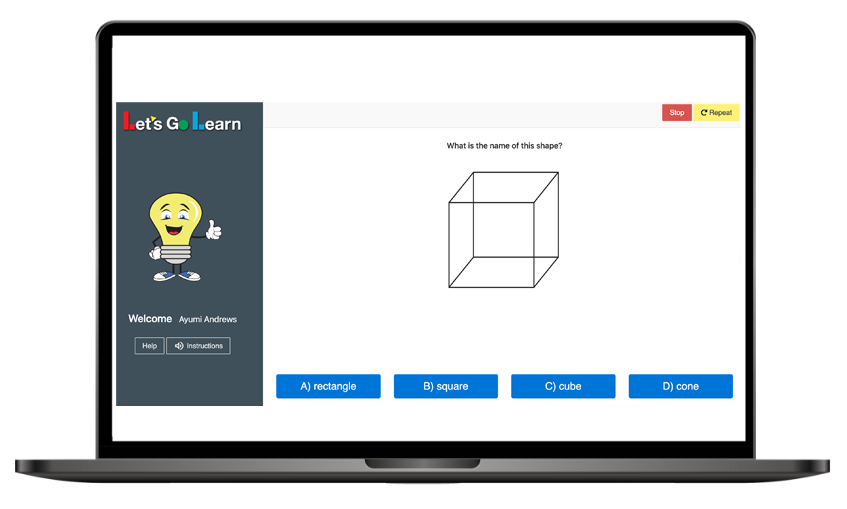
Recent blog posts…
Summer Homeschool Curriculum
Summer Homeschool Curriculum Homeschooling offers various options for implementing a summer curriculum, providing flexibility to parents and students. One popular method is year-round homeschooling, where learning continues throughout the summer without the traditional
Understanding the Science of Reading and the 3-Cueing System
Three Cueing System In reading education, various models and theories explain how individuals learn to read and comprehend text. Among these, the 3-cueing model has recently become a topic of much discussion. States
CASE Academy of Law & Leadership
CASE Academy of Law & Leadership The New York Times recently highlighted a critical conversation sweeping across the nation – how we teach children to read. From school board meetings to statehouses, discussions
Continuation School
Continuation School Continuation schools have a long history of providing alternative education pathways for students who struggle in traditional school settings. Established in the early 20th century to address the needs of working

